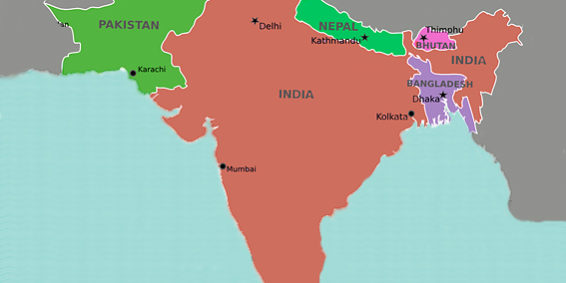India is the largest country in South Asia, and is geographically at the centre of the region. Naturally, it is a dominant power in South Asian geopolitics. History is evidence that India has played an important role in the development of the region in all spheres. However, recent conflicts, particularly with China, have stalled this goal of regional development and hindered India's stronghold in its own backyard. It is said that history is an indication of what's to come. Let us look back in time then analyse the present to speculate about the future. India was one of the first Non-Communist countries to officially recognise the People's Republic of China in 1949. It was 1954 when Chinese Premier Zhou Enlai and Indian Prime Minister Jawaharlal Nehru signed the Panscheel pact which became the bedrock of the Non-Aligned Movement, underlining the five principles of peaceful co-existence. The five principles of Panscheel were to have mutual respect for one another's territorial integrity, non-aggression, non-interference in one another's internal affairs, equality and working for each other's benefits and finally peaceful co-existence. However, since then the two countries have had several territorial disputes and border clashes.

In a startling turn of events in January of 1959, Enlai proceeded to claim 40,000 sq miles of Indian territory in the strategically valued regions of Ladakh and Northeast India. Following this, there have been several meetings and attempts to settle the dispute concerning the boundary dispute between the nations. However, no significant results have been achieved so far. In 1962, Beijing launched an attack on India that led to the infamous Sino-Indian border war, with clashes over the disputed Aksai Chin and border areas in Arunachal Pradesh leading to massive bloodshed and destruction. On 21 April 1962, China finally resolved to declare a unilateral ceasefire and withdrew its troops and positioned itself 20 kilometres behind the Line of Actual Control. Even after this there have been several border clashes between the two regional superpowers such as one in 1967 at Nathu La in Sikkim where around 80 Indian and 400 Chinese soldiers were killed. In 1959, the Dalai Lama escaped Tibet fearing for his life when the Tibetan uprising broke out, and he sought refuge in India. He couldn't go back as the CPC which controlled Tibet would not issue a visa for him. This soured Indo-China relations even further. In June 2000, when the Karmapa Lama fled China and joined the Dalai Lama in Dharamshala, Beijing warned that his asylum would lead to violation of the Panscheel pact.
On the 13 th of January 2009, Indian Prime Minister Manmohan Singh visited China as bilateral trade betweent the two nations surpassed $50 billion and China became India's largest trading partner. However, on 27 th August 2010, India cancelled defence exchanges with China due to the tensions between the two nations.
The most recent developments in the conflict occurred in April of this year when another major border standoff took place at the LAC in Ladakh. Diplomatic talks ensued to resolve the standoff, but four days after the initial standoff, 20 Indian soldiers including a Colonel were reportedly killed in a clash with Chinese troops in the Galwan Valley. Following this there were fervent calls across India to boycott Chinese products. The Indian Railways cancelled a contract with a Chinese firm and the Indian government has since banned 59 Chinese apps in India. According to the Global Times, the banning of these apps had a huge impact on the Chinese economy, particularly Tiktok's parent company ByteDance, which is set to lose $6 billion dollars.
Ever since the partition of India in 1947, diplomatic relations between India and Pakistan have been very hostile. The two countries have been to war four times - in 1949, 1965, 1971 and 1999. Several terror attacks have been carried out by militant extremist groups allegedly funded and backed by Pakistan, one of which is the catastrophe that occurred on the 26 th of November, 2008. On that day, ten armed Pakistani men associated with Lakshar-e-Tayyiba, a terrorist organisation, stormed various buildings in Bombay, attacked people on the streets and stormed hospitals with a death toll of 164 people.